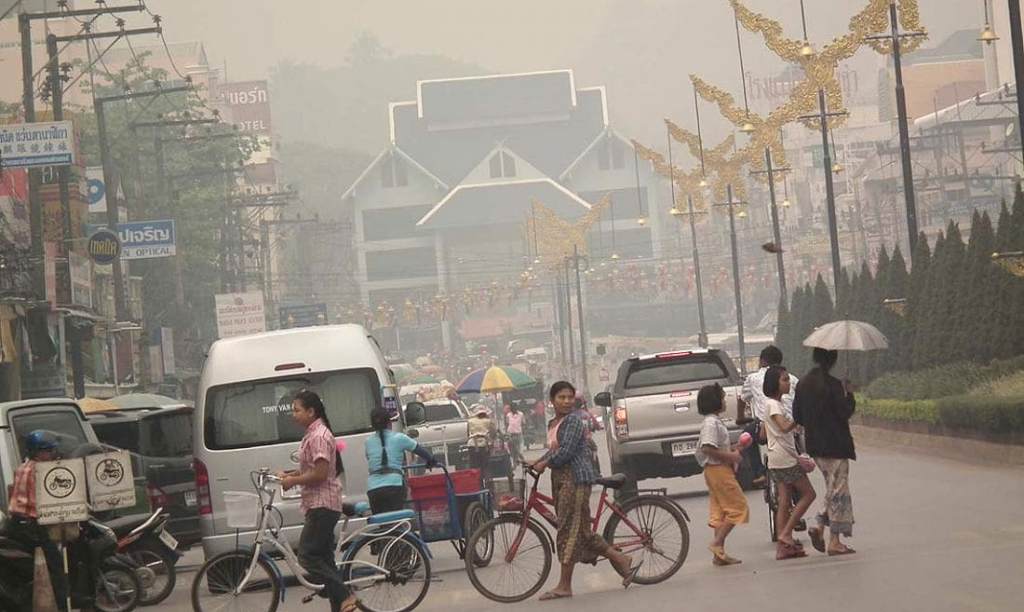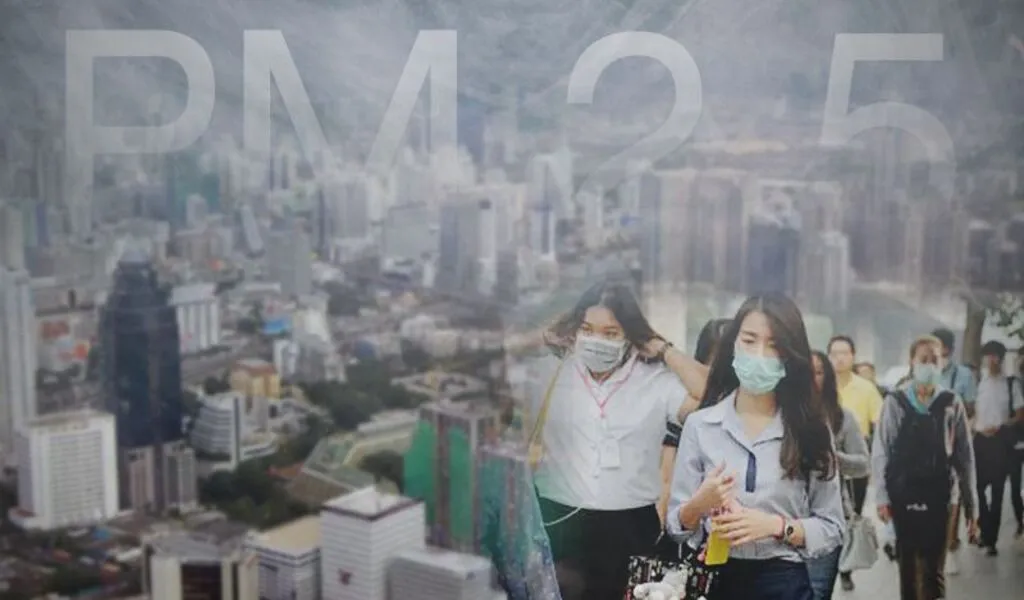Thailand’s Pollution Control Department on Sunday warned PM2.5 air pollution would at toxic levels in Bangkok and northern provinces from Monday to Saturday are expected to improve due to a strong southerly wind that will blow away the dust.
Except for Chiang Rai, Chiang Mai, Nan, Phayao, Lampang, Lamphun, Sukhothai, and Tak provinces in the north, overall PM2.5 levels were mostly below the safe limit of 50 microgrammes per cubic meter (g/m3) as of noon on Sunday.
According to air pollution monitoring center reports, PM2.5 levels were 22-89 g/m3 in the North, 14-46 g/m3 in the Northeast, 11-45 g/m3 in the Central and West, 14-33 g/m3 in the East, and 8-18 g/m3 in the South at the time.
PM2.5 dust levels in Bangkok and neighbouring provinces ranged from 14 to 38 g/m3.
From February 6 to 11, Greater Bangkok’s air quality is expected to improve significantly due to improved air circulation and a southerly wind that will blow dust particles away.
However, PM2.5 dust levels in the 17 provinces of the upper and lower North Region should be closely monitored, as they exceed the 50 g/m3 threshold between February 6-7 and 9-11.
Meanwhile, the Thai Meteorological Department said on Sunday that the current moderate high pressure over northern Thailand and the South China Sea would allow a southeasterly wind to bring moisture from the South China Sea and the Gulf of Thailand to the lower North, lower Northeast, and Central regions, including Bangkok and surrounding provinces.
As a result, rain and morning fog are expected in the upper part of the country during this time.
With easterly and southeasterly winds prevailing over the Gulf of Thailand, the South, and the Andaman Sea, rain and thunderstorms will continue to blanket the South.
Thailand’s Air Quality PM2.5 Air Pollution Index
Thailand as a country has numerous polluted cities, some of which are well-known for their levels of smoke and haze. Chiang Mai, once renowned and hailed as a cleaner and less densely populated version of Bangkok, has recently exploded in terms of pollution, having overtaken Bangkok in 2019, with PM2.5 readings sitting at a yearly average of 32.3 g/m3, as opposed to Bangkok’s 22.8 g/m3.
These increases in dangerous particles and chemicals in the air in all of its major cities raise the AQI rating to potentially hazardous levels.
Thailand’s citizens are well aware of this, but daily life goes on, and cars continue to transport people to and from work while emitting tons of toxic smoke and fumes, with many older vehicles, such as buses and trucks, many of which are in various states of disrepair, sharing the road and emitting their fair share of pollution and toxic fumes.
Despite the government’s efforts to remove such offending vehicles from the road, preventative measures are not always fully implemented, and polluting trucks and buses continue to roam the country, spreading their insidious PM2.5 content wherever they go.
Thailand was ranked 28th out of 98 countries in IQAir’s 2019 World Air Quality Report, with a yearly PM2.5 rating of 24.3 g/m3, placing it at a moderate risk to health according to the US Air Quality Index. While this is not particularly bad in comparison to the world’s worst offenders, it is still twice the WHO’s exposure recommendation for PM2.5 and other dangerous chemicals like nitrogen dioxide (NO2), sulphur dioxide (SO2), and carbon monoxide (CO), to name a few.
While on the ground in cities such as Bangkok, one might be able to say that pollution is extremely palpable and can cause a number of immediate effects that leave a more profound imprint on a person’s memory, as opposed to the hidden long-term effects that we tend to brush under the rug and forget about.
When caught in areas of heavy traffic and during rush hour, these immediate effects can include sore throats, other respiratory ailments, and headaches, with mask usage being extremely prevalent amongst the population of Bangkok and other cities long before the arrival of the 2020 COVID era.
The average citizen or tourist would hardly need to look at an air quality index to realize that the air they are breathing is unclean.
Thailand certainly has pollution problems, as well as cities with high concentrations of haze, smog, and other contaminants in the air; however, unless you belong to the demographic of people who suffer from respiratory issues, the air quality in Thailand is not an immediate danger.
Many improvements could be made and are currently being implemented that will undoubtedly lower its rating in the coming years, but for the time being, Bangkok may simply be known as a moderately polluted city.
Individuals who are sensitive to certain chemicals found in common pollutants should take precautions to keep themselves safe, including using apps like AirVisual by IQAir.
AirVisual displays constantly updated statistics of pollution levels in specific areas, allowing those who are at risk to take appropriate action when levels of PM2.5 are detected to be higher.








